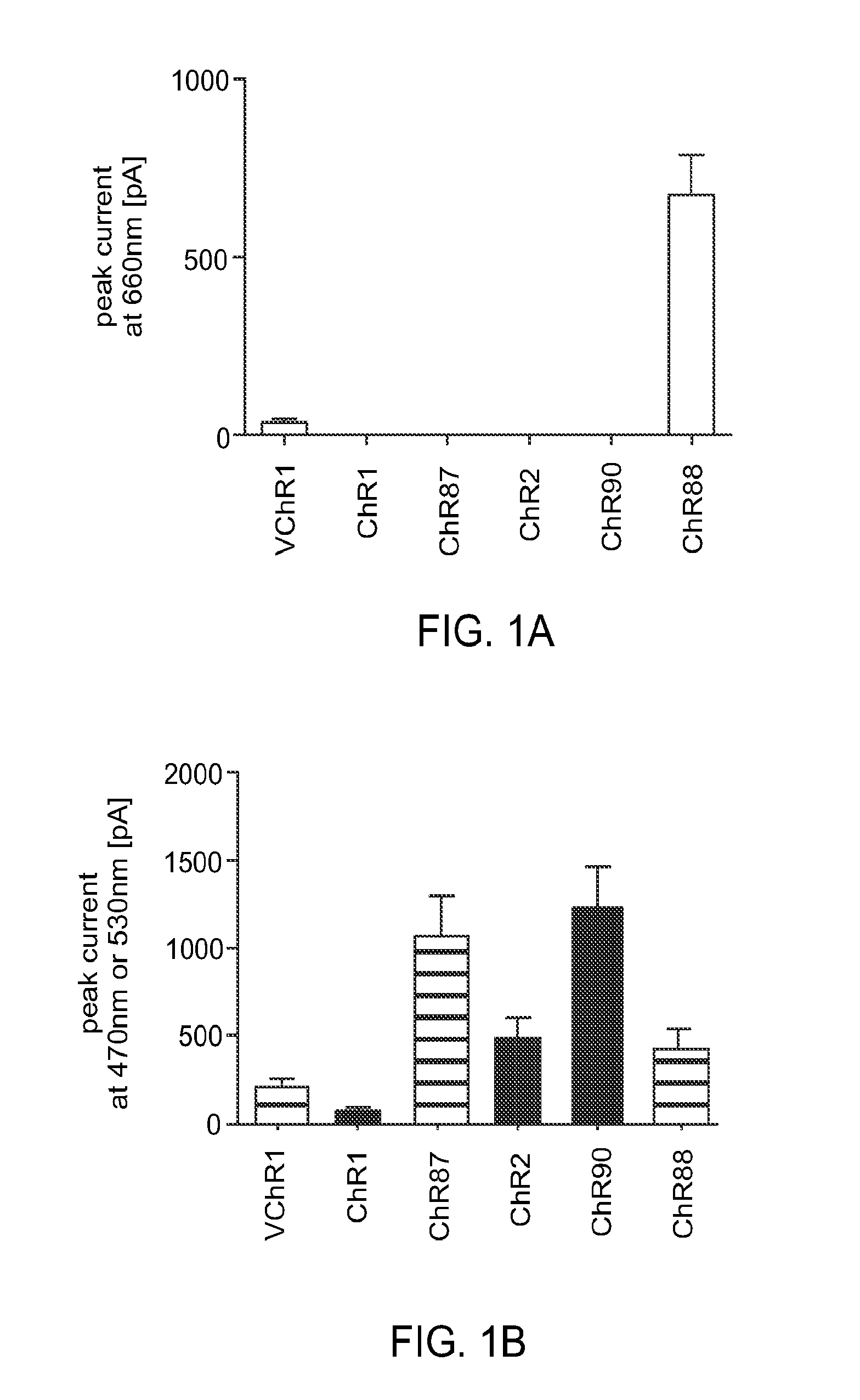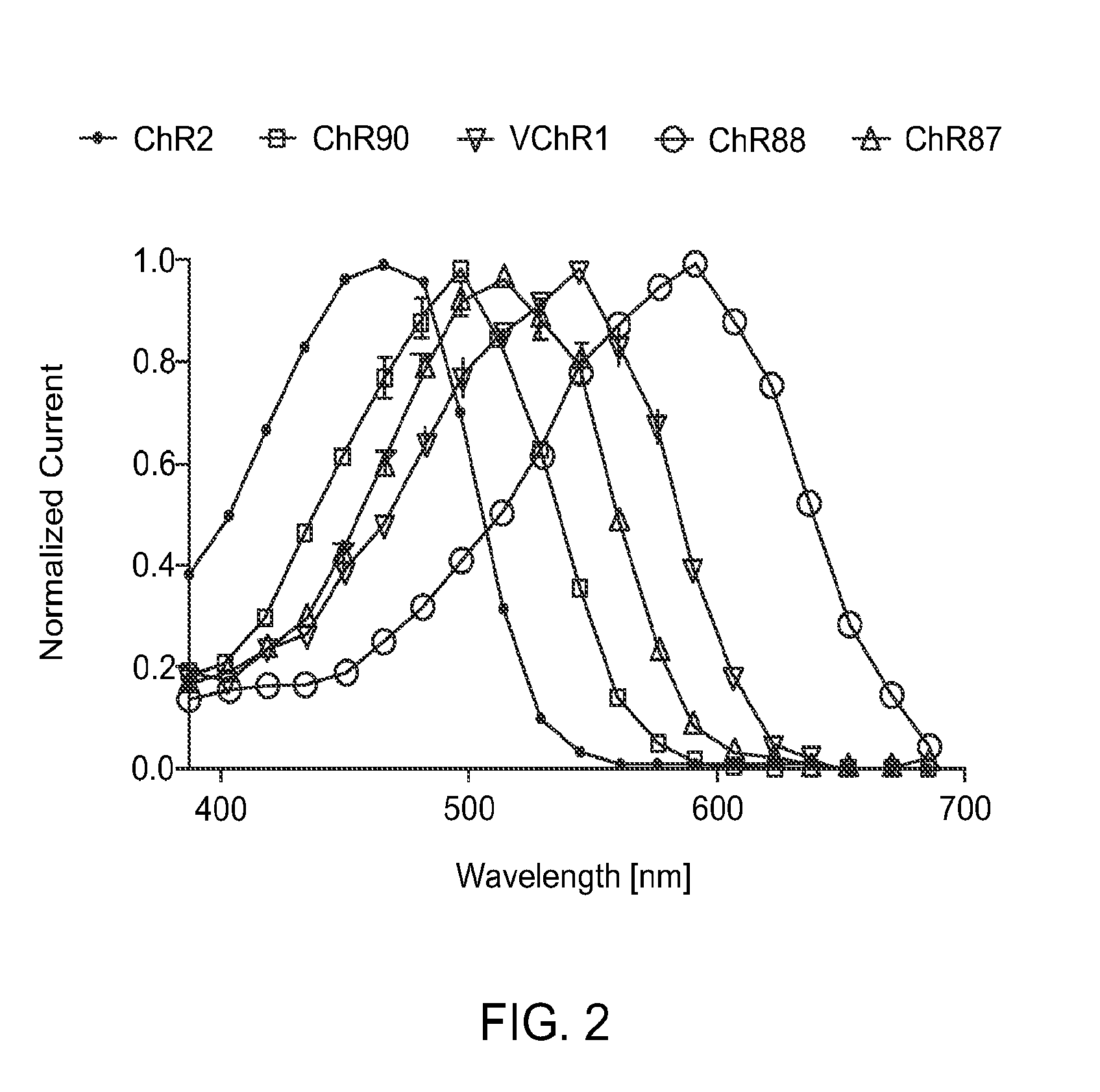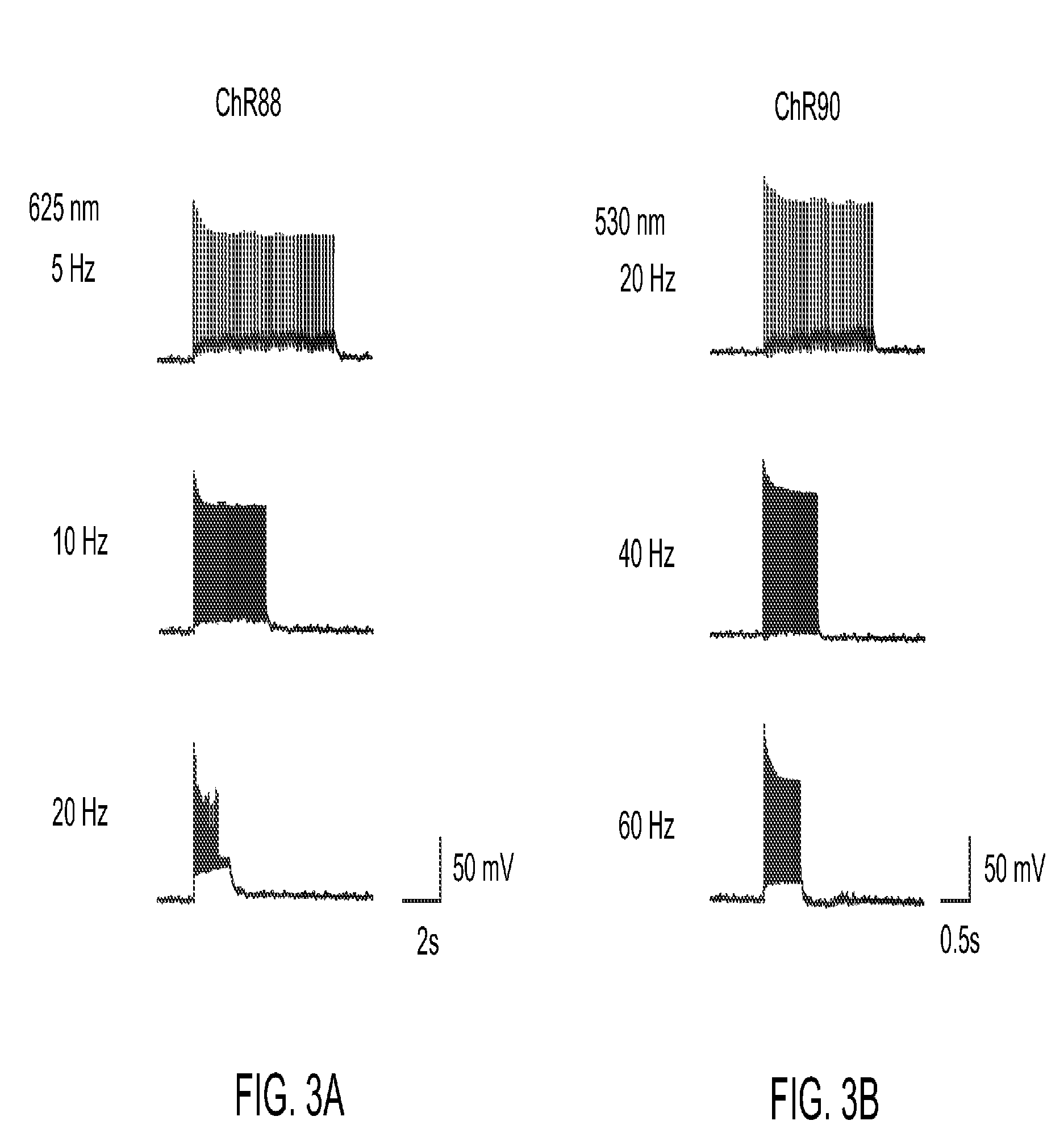Channelrhodopsins for optical control of cells
a cell and optical control technology, applied in the field of channelrhodopsins for cell optical control, can solve problems such as limiting their usefulness, and achieve the effects of increasing and reducing the ion conductivity of the membran
- Summary
- Abstract
- Description
- Claims
- Application Information
AI Technical Summary
Benefits of technology
Problems solved by technology
Method used
Image
Examples
example 1
[0135]Studies were performed to prepare sequences and to express light-activated ion channels in cells, tissues, and subjects. Identifications and amino acid sequences of some of the light-activated ion channels in the examples are ChR88 (SEQ ID NO:2); ChR90 (SEQ ID NO:7); ChR87 (SEQ ID NO:11); ChR62 (SEQ ID NO:14), ChR93 (SEQ ID NO:16) and ChR2 (SEQ ID NO:19), ChR88 K176R (SEQ ID NO:5). Non-limiting exemplary methods are set forth Example 1. General methods also applicable to light-activated channel molecules and methods for their use are disclosed in publications such as US Published Application No. 2010 / 0234273, US Published Application No. 20110165681, Chow B Y, et. al. Methods Enzmymol. 2011; 497:425-43; Chow, B Y, et al. Nature 2010 Jan. 7; 463(7277):98-102, the content of each of which is incorporated by reference herein.
[0136]Studies were performed to prepare sequences and to express light-activated ion channels in cells, tissues, and subjects. Non-limiting exemplary methods...
example 2
[0154]Light-activated ion channels VChR1, ChR1, ChR2, ChR87, ChR90, and ChR88 were expressed in cultured hippocampal neurons using neuron culture, transfection, infection, and imaging methods described in Example 1. In vitro whole cell patch claim recording and optical stimulation were conducted on the neurons using methods described in Example 1. FIG. 1 shows channelrhodopsin photocurrents measured in the cultured hippocampal neurons. FIG. 1A shows results using red light (660 nm) peak photocurrent at 10 mW mm−2 for 1 s illumination. ChR88 is the only red light sensitive channelrhodopsin with significant photocurrent at 660 nm. FIG. 1B shows results using blue (4.23 mW mm−2) or green (3.66 mW mm−2) light peak photocurrent at equal photon flux for 5 ms illumination. ChR87, ChR88, and ChR90 all have greater or comparable photocurrent than ChR2. Solid bar indicates blue light, horizontal striped bar indicates green light.
example 3
[0155]HEK 293FT cells were transfected to express ChR2, ChR90, VChR1, ChR88, and ChR87 light-activated ion channels using methods of Example 1. In vitro whole cell patch claim recording and optical stimulation were conducted on the transfected, cultured cells using methods described in Example 1. FIG. 2 show action spectrum at equal photon dose at all to wavelengths recorded in HEK293FT cells. ChR2 (470 nm peak) and VChR1 (545 nm peak) represent the existing channelrhodopsin color sensitivity range. ChR87 (515 nm peak) and ChR90 (500 nm peak) are blue green light sensitive channelrhodopsins. Whereas ChR88 (590 nm peak) is the first red light sensitive natural channelrhodopsin.
PUM
| Property | Measurement | Unit |
|---|---|---|
| wavelength | aaaaa | aaaaa |
| wavelength | aaaaa | aaaaa |
| wavelength | aaaaa | aaaaa |
Abstract
Description
Claims
Application Information
 Login to View More
Login to View More - R&D
- Intellectual Property
- Life Sciences
- Materials
- Tech Scout
- Unparalleled Data Quality
- Higher Quality Content
- 60% Fewer Hallucinations
Browse by: Latest US Patents, China's latest patents, Technical Efficacy Thesaurus, Application Domain, Technology Topic, Popular Technical Reports.
© 2025 PatSnap. All rights reserved.Legal|Privacy policy|Modern Slavery Act Transparency Statement|Sitemap|About US| Contact US: help@patsnap.com



